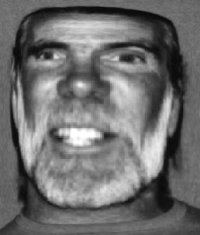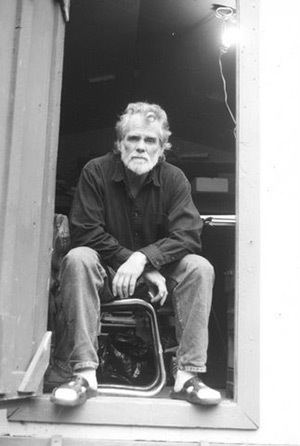Occupation Author Movies Peopletoys Role Author | Name Michael Shea Nationality American | |
 | ||
Born July 3, 1946
Los Angeles, California ( 1946-07-03 ) Genre Science fiction, fantasy, horror Died February 16, 2014, San Francisco, California, United States Awards World Fantasy Award for Best Novel, World Fantasy Award for Best Novella Nominations Locus Award for Best Fantasy Novel Books Nifft the Lean, The Color Out of Time, Polyphemus, The Mines of Behemoth, In Yana - the Touch of Undying Similar People Jack Vance, Ramsey Campbell, Thomas Ligotti, T E D Klein, Gene Wolfe | ||
Michael shea a short tribute with excerpt from fat face
Michael Shea (July 3, 1946 – February 16, 2014) was an American fantasy, horror, and science fiction author. His novel Nifft the Lean won the World Fantasy Award, as did his novella, Growlimb.
Contents
- Michael shea a short tribute with excerpt from fat face
- Michael shea interview for the extra
- Life and work
- Reception
- Awards
- References

Michael shea interview for the extra
Life and work
Shea was born to Irish parents in Los Angeles in 1946. There he frequented Venice Beach and the Baldwin Hills for their wildlife. He attended UCLA and Berkeley and hitch-hiked twice across the US and Canada. At a hotel in Juneau, Alaska, Shea chanced on a battered book from the lobby shelves, The Eyes of the Overworld by Jack Vance (1966). Four years later, after a brief first marriage and one year hitch-hiking through France and Spain, he wrote a novel in homage to Vance, who graciously declined to share the advance offered by DAW Books. It was Shea's first publication, A Quest for Simbilis (1974), and an authorized sequel to Vance's two Dying Earth books then extant. ISFDB notes that it "became non-canonic" in 1983 when Vance "continued ... The Eyes ... in a different direction."
Subsequently Shea ranged all over the L.A. Basin, painting houses and teaching ESL to adults by night. In 1978 he met his second wife, artist and author Lynn Cesar. They had two children: Adele and Jacob. Shea moved to the Bay Area where (prior to 1987) he held a variety of occupations, including instructor of languages, construction laborer, and night clerk in a Mission District flophouse.
In 1979 Shea published the story "The Angel of Death" (Magazine of Fantasy and Science Fiction, Aug 1979). This was followed in 1980 by "The Autopsy" (Magazine of Fantasy and Science Fiction, Dec 1980), a story nominated for both the Hugo Award and Nebula Award.
His next published work was the novella "Polyphemus" (Magazine of Fantasy and Science Fiction, Aug 1981). His story "The Frog" appeared in The Magazine of Fantasy and Science Fiction (Apr 1982). Shea was quiet for a few years but re-emerged with his second book, a collection of four linked novellas called Nifft the Lean (1982). Nifft showed that Shea had developed the exotic style of Vance and Clark Ashton Smith, plus the ingenuity of Fritz Leiber's Gray Mouser stories, to produce an extravagant quest novel. It won the 1983 World Fantasy Award as year's best novel.
Shea followed up with The Color out of Time (1984), a work influenced by the Cthulhu Mythos, and In Yana, the Touch of Undying (1985), about a vain opportunist's search for immortality in a land of fable. Polyphemus (1987) is a collection of deft science fiction and horror stories published by Arkham House.
Shea continued the adventures of Nifft in The Mines of Behemoth (Baen, 1997), serialised one year earlier in the Algis Budrys magazine Tomorrow Speculative Fiction, and in a novel The A'rak (2000). The Nifft stories are "sword-and-sorcery" modeled on Jack Vance, notable for their imaginative depiction of the world of demons and their blend of horror, flowery diction, and occasionally crude humor.
Shea's work overlaps the science fiction and fantasy genres, e.g., thematic use of demons and aliens that act as endoparasites. Shea's interest in Lovecraft's Cthulhu Mythos continued throughout his career. Copping Squid and Other Mythos Tales (2010) is a collection of such tales.
Shea died unexpectedly on February 16, 2014.
Reception
In an overview of Shea's work, Chris Gilmore praised Shea's fiction, stating "Shea has a racy line in grue and writes with energy, imagination and precision", and expressed particular admiration for the stories in Polyphemus. However, Gilmore also took issue with Shea's use of gigantic monsters in books such as A Quest for Simbilis and Nifft the Lean, arguing that the use of such creatures vitiated Shea's ability to describe scenes in detail. Gilmore also criticised Shea's story "The Pearls of the Vampire Queen" as being excessively violent, arguing that its protagonists kill one person and seriously injure another when the story did not require them to perform such actions.
Reviewing The Incomplete Nifft, Elizabeth Hand declared that "not even Bosch could capture the sheer, obsessive teemingness of Shea's world. . . . In their picaresque and unrelenting strangeness, Shea's tales evoke Jack Vance and Lord Dunsany, Clark Ashton Smith's Zothique tales, as well as The Worm Ouroboros; but what his work most reminds me of is David Lindsay's A Voyage to Arcturus, a book which had always struck me as being sui generis. Having read and delighted in The Incompleat Nifft, I must create a new category for this beautiful, terrifying work, part sword-and-sorcery, part season in hell. Call it Shea generis."
On his list of "The 13 Most Terrifying Horror Stories", T. E. D. Klein placed Shea's story "The Autopsy" at number eleven.
Awards
Shea has won major "year's best" awards, both conferred by the World Fantasy Convention and selected by open nominations and panel of judges.
His works have also been highly ranked, or one of a few finalists or nominees, for several other major awards.
